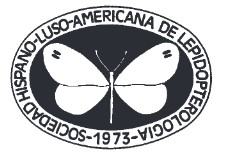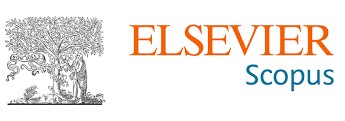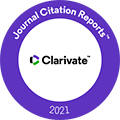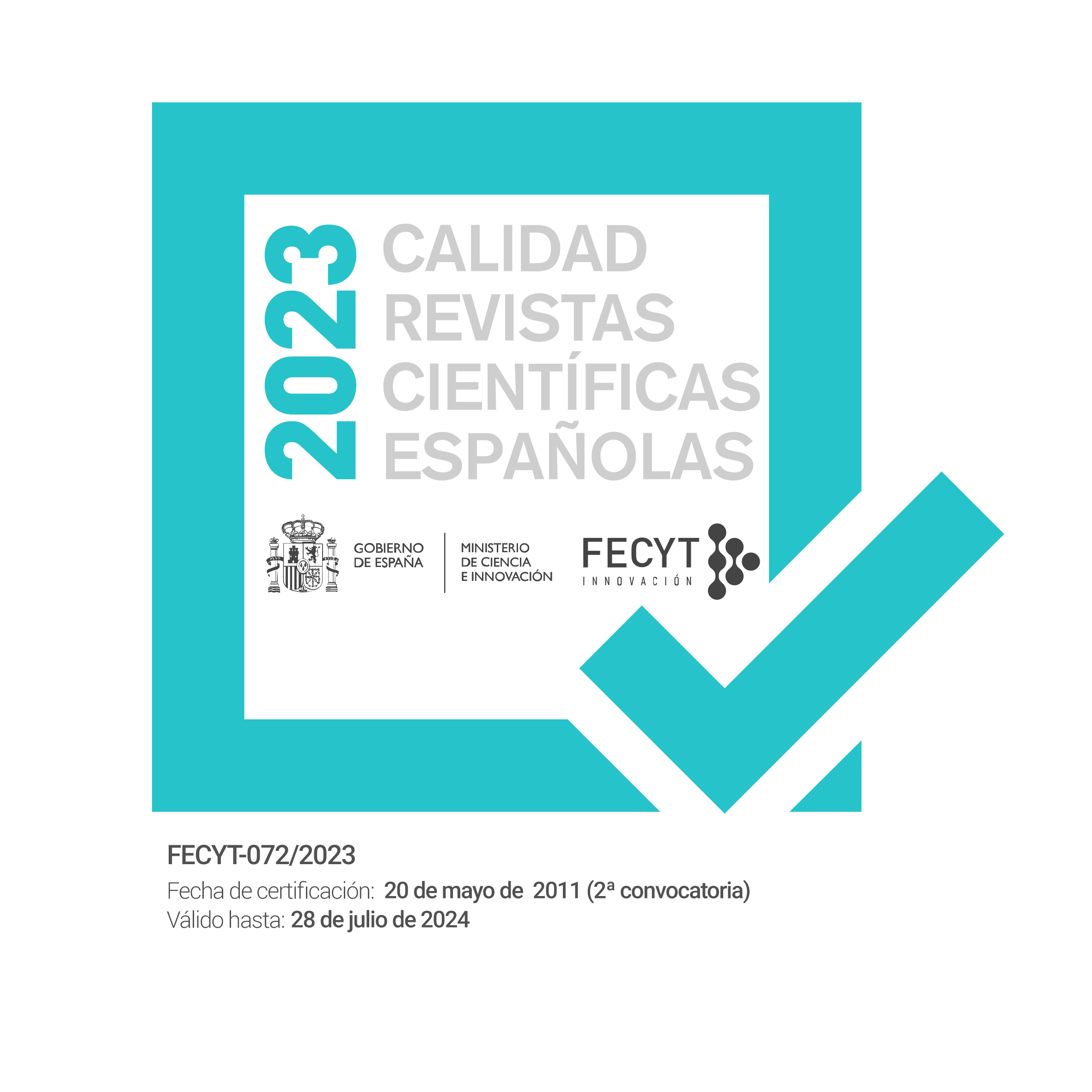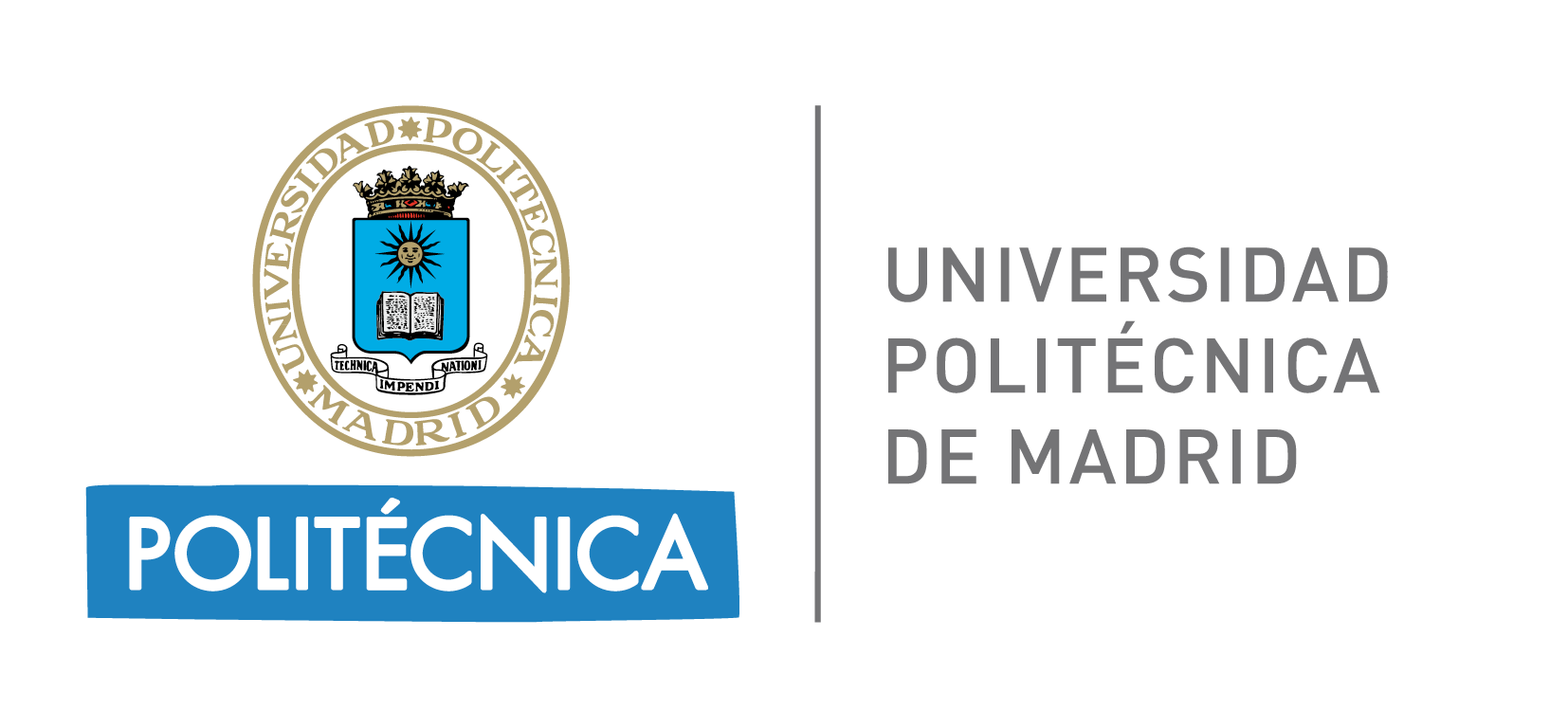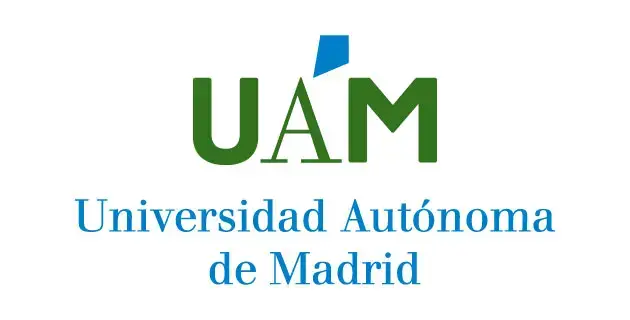Butterflies of the Urban Natural Reserve “General San Martin”, Cordoba, Argentina (Lepidoptera: Papilionoidea)
DOI:
https://doi.org/10.57065/shilap.640Keywords:
Lepidoptera, Papilionoidea,, urban diversity, seasonality, protected areas, ArgentinaAbstract
In Argentina, the diversity of butterflies is high because of the variety of ecoregions and their characteristic floras related to different altitudes, terrain relief and climates. Recently, the species that inhabit wild environments in the central zone of the country are being studied. However, records about butterflies living in urban areas are scarce. The objective of the present work was to recognize the composition of the butterfly fauna in the Reserva Urbana General San Martín and its seasonal variation. This reserve is the only protected natural area within the city of Córdoba. The data considered in this study came from three types of sampling. The occasional registers corresponded to accidental encounters, with photographic documentation, between 2009 and 2014. In the 14 monthly general samplings between September 2011 and November 2012, a directed search was carried out by means of day-long walks along the different paths of the Reserve. Lastly, between November 2011 and May 2012, nine systematic, structured samplings were carried out in nine locations: three in wooded zones, three in open areas and another three along the riverside, trying to cover the greats landscape heterogeneity, ground surface and high butterfly activity hours. A total of were 64 species were registered, that correspond to 51 and six families: Hesperiidae (19), Lycaenidae (11), Nymphalidae (19), Papilionidae (2), Pieridae (8) and Riodinidae (5). Cymaenes gisca Evans, 1955 (Hesperiidae) and Lemonias albofasciata (Godman, 1903) (Riodinidae) are mentioned for the first time in this area, and the presence of Staphylus tucumanus (Plötz, 1884) (Hesperiidae) is confirmed. The abundance of adult butterflies was notoriously seasonal, concentrated in the warmer seasons (spring, summer and autumn) and, even when there were no statistically significant differences between them, there were some peculiarities in the compositional variation of some families. The different sampling types complemented each other and efforts to describe the specific composition of the butterflies in the Reserve were successful. Species registered signify almost 50% of all butterflies known in the central mountains of Argentina, which highlights the conservation value that this protected area represents.
Downloads
Global Statistics ℹ️
|
159
Views
|
126
Downloads
|
|
285
Total
|
|
References
Bonaerenses: 350 pp. Literature of Latin America, Buenos Aires.
CANALS, G., 2003.– Mariposas de Misiones: 476 pp. Literature of Latin America, Buenos Aires.
COLWELL, R. K., 2013.– EstimateS: Statistical estimation of species richness and shared species from sample. Versión 9. Department of Ecology and Evolutionary Biology, University of Connecticut. Available from http://viceroy.eeb.uconn.edu/estimates.
COLWELL, R. K. & CODDINGTON, J. A., 1995.– Estimating terrestrial biodiversity through extrapolation.– In D. L. HAWKSWORTH. Biodiversity measurement and estimation: 101-118 pp. Chapman & Hall, Nueva York. DOI: https://doi.org/10.1098/rstb.1994.0091
CONSTANTINO, L. M., 1997.– Natural history, immature stages and hostsplants of Morpho amathonte from western Colombia (Lepidoptera: Nymphalidae: Morphinae).– Tropical Lepidoptera, 8(2): 75-80.
DEVRIES, P. J., 1987.– The butterflies of Costa Rica and their natural History. Papilionidae, Pieridae, Nymphalidae: 327 pp. Princeton University Press, Nueva Jersey.
DREWNIAK, M. E., VILLAFAÑE, N. A., BECCACECE, H. M., ZARCO, A. & ZAPATA, A. I., 2010.– Mariposas diurnas (Lepidoptera: Papilionoidea y Hesperioidea) de la Ciudad de Córdoba, Argentina. I Congreso Latinoamericano (IV Argentino) de Conservación de la Biodiversidad. San Miguel de Tucumán, Argentina.
GIACOMELLI, E., 1923.– Enumeración sistemática y anotaciones sobre los lepidópteros de Villa Cabrera.– Revista de la Universidad Nacional de Córdoba, 10: 174-188.
GOTELLI, N. & COLWELL, R. K., 2001.– Quantifying biodiversity: Procedures and pitfalls in the measurement and comparison of species richness.– Ecology Letters, 4: 379-391. DOI: https://doi.org/10.1046/j.1461-0248.2001.00230.x
HAYWARD, K. J., 1933.– Familia Hesperiidae II. Subfamilia Pyrginae. Secc. “A”.– Revista de la Sociedad Entomológica Argentina, 5(23): 140-188.
HAYWARD, K. J., 1948-1967.– Genera et Species Animalium Argentinorum. Insecta, Lepidoptera (Rhopalocera), 1(1948): 10 + 289 pp.; 2(1950): 10 + 388 pp.; 3(1964): 14 + 472 pp.; 4(1967): 16 + 447 pp. Instituto Miguel Lillo, San Miguel de Tucumán.
HAYWARD, K. J., 1973.– Catálogo de los ropalóceros argentinos.– Opera Lilloana, 23: 1-318.
HEIKKILÄ, M., KAILA, L., MUTANEN, M., PEÑA, C. & WAHLBERG, N., 2012.– Cretaceous origin and repeated tertiary diversification of the redefined butterflies.– Proceedings of the Royal Society B, 279: 1093–1099. doi:10.1098/rspb.2011.1430. DOI: https://doi.org/10.1098/rspb.2011.1430
HEPPNER, J. B., 1991.– Faunal regions and the diversity of Lepidoptera.– Tropical Lepidoptera, 2: 1-85.
HEPPNER, J. B., 1998.– Classification of Lepidoptera. Part 1. Introduction - Holarctic Lepidoptera, 5(suppl. 1): IV, 1-148, pls. 1-6.
INDEC, 2010.– Instituto Nacional de Estadísticas y Censos. Censo 2010, Córdoba Capital, Argentina. Disponible en http://www.indec.mecon.ar/censo2010.
KOPTA, R. F., 1999.– Problemática ambiental, con especial referencia a la provincia de Córdoba: 203 pp. Fundación ACUDE, Córdoba.
LAMAS, G., 2000.– Estado actual del conocimiento de la sistemática de los lepidópteros, con especial referencia a la Región Neotropical.– In M. F. PIERA, J. J. MORRONE & A. MELIC. Hacia un Proyecto CYTED para el Inventario y Estimación de la Diversidad Entomológica en Iberoamérica: PriBES 2000 (Monografía Tercer Milenio): 253-260 pp. Sociedad Entomológica Aragonesa, Zaragoza.
LAMAS, G., 2004.– Checklist: Part 4 A. Hesperioidea-Papilionoidea.– In J. B. HEPPNER. Atlas of Neotropical Lepidoptera: XXXVI: 439 pp. Association for Tropical Lepidoptera, Gainesville.
LAZZERI, M. G., BAR, M. E. & PIERI-DAMBORSKY, M., 2011.– Diversidad del orden Lepidoptera (Hesperioidea y Papilionoidea) de la ciudad Corrientes, Argentina.– Revista de Biología Tropical, 59(1): 299-308. DOI: https://doi.org/10.15517/rbt.v59i1.3199
LLORENTE-BOUSQUETS, J., LUIS-MARTÍNEZ, A., VARGAS-FERNÁNDEZ, I. & SOBERÓN, J. M., 1996.– Papilionoidea (Lepidoptera): 531-548.– In J. LLORENTE-BOUSQUETS, A. GARCÍA-ALDERETE & E. GONZÁLEZ-SORIANO. Biodiversidad, taxonomía y biogeografía de artrópodos de México: hacia una síntesis de su conocimiento: 660 pp. CONABIO-UNAM, México D.F.
LUTI, R., GALERA, M., MÜLLER DE FERREIRA, N., BERZAL, N., NORES, M., HERRERA, M. & BARRERA, J., 1979.– Vegetación.– In J. VÁZQUEZ, R. MIATELLO & M. ROQUE. Geografía Física de la provincia de Córdoba: 297-368. Boldt, Córdoba.
MATTONI, R & VANNUCCI, N., 2008.– Mariposas de jardín de Buenos Aires: 24 pp. Lepidoptera Research Foundation, Beverly Hills.
MAYA-MARTÍNEZ, A., POZO, C. & MAY, E. U., 2005.– Las mariposas (Rhopalocera: Papilionidae, Pieridae y Nymphalidae) de la selva alta subperennifolia de la región de Calakmul, México, con nuevos registros.– Folia Entomológica Mexicana, 44(2): 123-143.
MIELKE, O. H. H., 2005.– Catalogue of the American Hesperioidea: Hesperiidae (Lepidoptera), 1: XIII + 1-125, 2: 126-410, 3: 411-771, 4: 772-1055, 5: 1056-1383, 6: 1384-1536. Sociedad Brasileira de Zoologia, Curitiba.
NEW, T. R., 1997.– Butterfly Conservation, 2nd ed.: 384 pp. Oxford University Press, Melbourne.
NÚÑEZ-BUSTOS, E. O., 2008.– Diversidad de mariposas diurnas en la reserva privada Yacutinga, provincia de Misiones, Argentina (Lepidoptera: Hesperioidea y Papilionoidea).– Tropical Lepidoptera Research, 18(2): 78-87.
NÚÑEZ-BUSTOS, E. & VOLKMANN, L., 2011.– Mariposas diurnas escasas y asociadas a determinados ambientes de montaña de Argentina central con nuevos registros para el área de estudio (Lepidoptera: Papilionoidea y Hesperioidea).– SHILAP Revista de lepidopterología, 39(155): 245-262.
RAMÍREZ-RESTREPO L., CHACÓN DE ULLOA, P. & CONSTANTINO, L. M., 2007.– Diversidad de mariposas diurnas (Lepidoptera: Papilionoidea y Hesperioidea) en Santiago de Cali, Valle del Cauca, Colombia.– Revista Colombiana de Entomología, 33(1): 54-63. DOI: https://doi.org/10.25100/socolen.v33i1.9316
SBARATO, D., ROTELA, C. H., POGGI., J. A., CAGLIOLO, M. F., ORTEGA, J. E., CAMPOS-CARRERAS, M. S., CORA, A., ENRICO, L., SALORT, M. R., FERNÁNDEZ, J., GERMANIER, A., NAVARRO DE LA FUENTE, M. L., RUBIO, M., SBARATO, V. M. & SUÁREZ, C., 1994. Estudio de Impacto Ambiental del “Parque General San Martín”, Ciudad de Córdoba, Argentina: 114 pp. Universidad Nacional de Córdoba, Córdoba.
SUMMERVILLE, K. S. & CRIST, T. O., 2003.– Determinants of lepidopteran community composition and species diversity in eastern deciduous forests: roles of season, eco-region and patch size.– Oikos, 100: 134-148. DOI: https://doi.org/10.1034/j.1600-0706.2003.11992.x
VARGAS-FERNÁNDEZ, I., LLORENTE-BOUSQUETS, J. & LUIS-MARTÍNEZ, A., 1992.– Listado Lepidopterofaunístico de la Sierra de Atoyac de Álvarez en el Estado de Guerrero: Notas acerca de su distribución local y estacional (Rhopalocera: Papilionoidea).– Folia Entomologica Mexicana, 86: 41-178.
VÉLEZ, J. & SALAZAR, J. (1991). Mariposas de Colombia: 167 pp. Villegas, Bogotá.
VILLAFAÑE, N. A., ZARCO, A., ZAPATA, A. I. & BECCACECE, H. M., 2008.– Riqueza de lepidópteros diurnos del Bosque Serrano en la localidad de La Granja, Córdoba, Argentina.– VII Congreso Argentino de Entomología. Huerta Grande, Córdoba.
VILLAFAÑE, N. A., ZAPATA, A. I., DREWNIAK, M. E. & BECCACECE, H. M., 2012.– Composición de la fauna de mariposas diurnas y su variación temporal en un sector del bosque serrano de Córdoba”.– IV Encuentro de Lepidoptera Neotropicales. Montevideo, Uruguay.
VOLKMANN, L. & NÚÑEZ-BUSTOS, E., 2010.– Mariposas Serranas de Argentina Central. Tomo I: Papilionidae, Pieridae, Lycaenidae y Riodinidae: 140 pp. Equipo Gráfico, Huerta Grande.
VOLKMANN, L. & NÚÑEZ-BUSTOS, E., 2013.– Mariposas Serranas de Argentina Central. Tomo II: Nymphalidae y Hesperiidae: 192 pp. Equipo Gráfico, Huerta Grande.
Downloads
Published
How to Cite
Issue
Section
License
Copyright (c) 2016 M. E. Drewniak, A. I. Zapata, H. M. Beccacece, F. Ficetti

This work is licensed under a Creative Commons Attribution 4.0 International License.
The author SS retains his trademark and patent rights to any process or procedure within the article.
The author retains the right to share, distribute, perform and publicly communicate the article published in SHILAP Revista de lepidopterología, with initial acknowledgement of its publication in SHILAP Revista de lepidopterología.
The author retains the right to make a subsequent publication of his work, from using the article to publishing it in a book, provided that he indicates its initial publication in SHILAP Revista de lepidopterología.
Each submission to SHILAP Revista de lepidopterología must be accompanied by an acceptance of copyright and acknowledgement of authorship. By accepting them, authors retain copyright of their work and agree that the article, if accepted for publication by SHILAP Revista de lepidopterología, will be licensed for use and distribution under a "Creative Commons Attribution 4.0 International" (CC BY 4.0) licence that allows third parties to share and adapt the content for any purpose giving appropriate credit to the original work.
You may read here the basic information and the legal text of the license. The indication of the CC BY 4.0 License must be expressly stated in this way when necessary.
As of 2022, the content of the print and digital version is licensed under a "Creative Commons Attribution 4.0 International License" (CC BY 4.0), licence that allows third parties to share and adapt the content for any purpose giving appropriate credit to the original work.
Previous content in the journal was published under a traditional copyright licence; however, the archive is available for free access.
When using the contents of SHILAP Revista de lepidopterología published before 2022, including figures, tables or any other material in printed or electronic format belong to the authors of the articles, the authors must obtain the permission of the copyright holder. Legal, financial and criminal liabilities in this respect belong to the author(s).
In application of the Principle of Priority of the International Code of Zoological Nomenclature, no other version than the one published by the publisher may be deposited in repositories, personal websites or similar.





